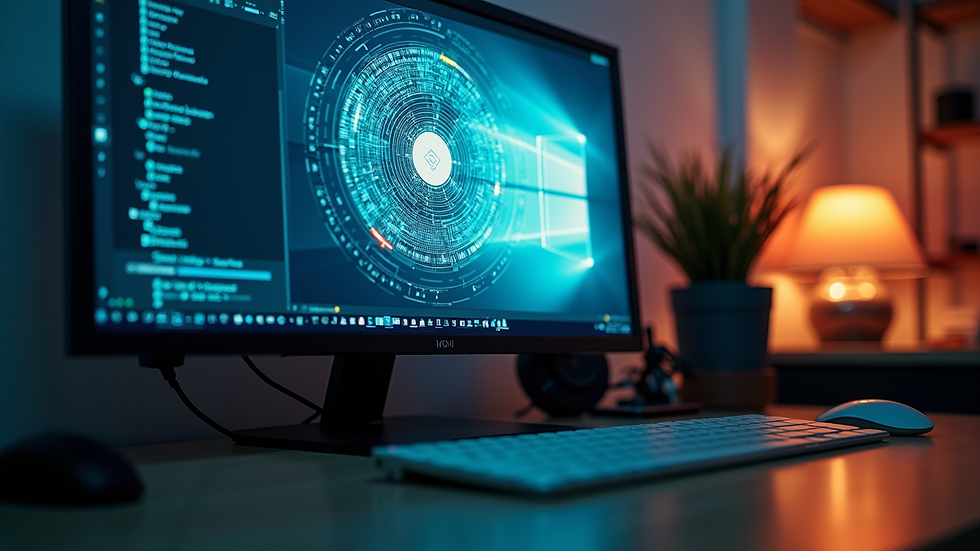The Rise of Digital Collectibles in the Art Market
- madlab
- Jul 22
- 4 min read
The world of art has undergone a seismic shift in recent years, with the rise of digital collectibles taking center stage. From digital paintings to unique 3D models, NFTs (Non-Fungible Tokens) have revolutionized how we think about art ownership and investment. This blog post will explore the nuances of digital collectibles in the art market, focusing on their appeal, practical implications, and the future of this exciting trend.
NFTs Overview
NFTs are digital assets that represent ownership of a unique item or piece of content on the blockchain. Unlike cryptocurrencies such as Bitcoin or Ethereum, which are fungible and can be exchanged for one another, NFTs are one-of-a-kind and cannot be replaced. They can represent anything from digital art, music, and videos to virtual real estate and in-game items.
The NFT market exploded in popularity in 2021, with sales reaching staggering figures. According to NonFungible.com, the NFT market generated over $10 billion in sales during the third quarter of 2021 alone. This growth marks a paradigm shift in how we perceive and interact with art.

The Appeal of Digital Collectibles
Digital collectibles appeal to a broad audience for several reasons. Firstly, they offer artists a new platform for sharing and monetizing their work. Emerging artists can reach a global audience without going through traditional gatekeepers like galleries or auction houses. The ability to retain royalties on secondary sales further incentivizes artists to create and sell their work as NFTs.
Moreover, collectors are drawn to the uniqueness and scarcity that NFTs provide. In a world where digital art can be easily copied and shared, owning a verified NFT assures collectors of their exclusive ownership of that piece. Additionally, the associated metadata includes provenance details, which enhance the value of the artwork.
Another significant aspect is the community that often surrounds NFT art. Many digital artists and collectors are active in dedicated online forums and social media groups, sharing ideas and supporting one another. This creates an enriching environment where collaboration and innovation can thrive.

Is Digital Art Worth Investing In?
The question of whether digital art is worth investing in has sparked debate among collectors and investors. Some argue that the volatility of the NFT market resembles that of cryptocurrencies and can lead to significant losses. For instance, an NFT that sold for millions can also lose its value rapidly, leaving investors with disappointment.
However, other experts advocate for the long-term potential of digital art investing. The NFT market is still in its infancy, and many believe it will mature in the coming years, eventually becoming as mainstream as traditional art investing. Statistics show that high-profile sales of NFTs, like Beeple's $69 million digital collage, have captured the attention of mainstream media and collectors.
Those interested in investing in digital art should conduct thorough research and consider the following factors:
Artist Reputation: Reputation plays a critical role in determining value. Invest in works from established artists or those making waves in the NFT community.
Rarity and Demand: Scarcity often drives value. Look for limited edition releases or unique pieces to enhance potential investment returns.
Market Trends: Keep an eye on trends and shifts in the digital art market to stay informed about potential growth areas.
Navigating the world of NFTs can be complex, but by staying informed and patient, investors can make savvy decisions regarding their digital art acquisitions.
Platforms for Buying and Selling NFTs
The accessibility of NFT marketplaces has made it easy for newcomers to enter the digital collectibles space. Some of the most popular platforms include:
OpenSea: As one of the largest NFT marketplaces, OpenSea supports a wide variety of digital assets and has a user-friendly interface.
Rarible: This platform allows artists to create and sell their NFTs while providing a decentralized approach to ownership.
Foundation: Known for its curated nature, Foundation caters to artists who are invited to participate, creating an air of exclusivity and quality.
Each platform has its unique features and fee structures, so it's vital for users to familiarize themselves with the rules before diving in.

The Future of Digital Collectibles
As the art market continues to evolve, the future of digital collectibles appears promising. The integration of blockchain technology in art ownership could pave the way for greater transparency and authenticity. This could lead to new monetization models for artists and a more democratized marketplace for collectors.
Furthermore, as the technology continues to advance, we may see innovative uses for NFTs beyond traditional art. For example, video games are already experimenting with NFTs, allowing players to own exclusive in-game items. Similarly, musicians and filmmakers can tokenize their work, offering fans unique experiences or collectibles.
The potential for cross-industry collaboration is vast. Brands may explore partnerships with digital artists, leading to limited edition merchandise or immersive experiences. The integration of augmented reality (AR) and virtual reality (VR) could enhance how we experience and interact with art, making it an exciting time to be part of the digital art landscape.
In summary, the rise of digital collectibles has opened new avenues for artists and collectors alike. As the NFT market continues to innovate, it is essential for enthusiasts and investors to stay informed and adaptable.
Exploring the world of digital art and collectibles may be intimidating at first, but understanding the underlying principles will benefit anyone looking to navigate this emerging market successfully. The shift to digital is not just a passing trend; it represents a fundamental change in how art is created, shared, and owned in the modern world.























